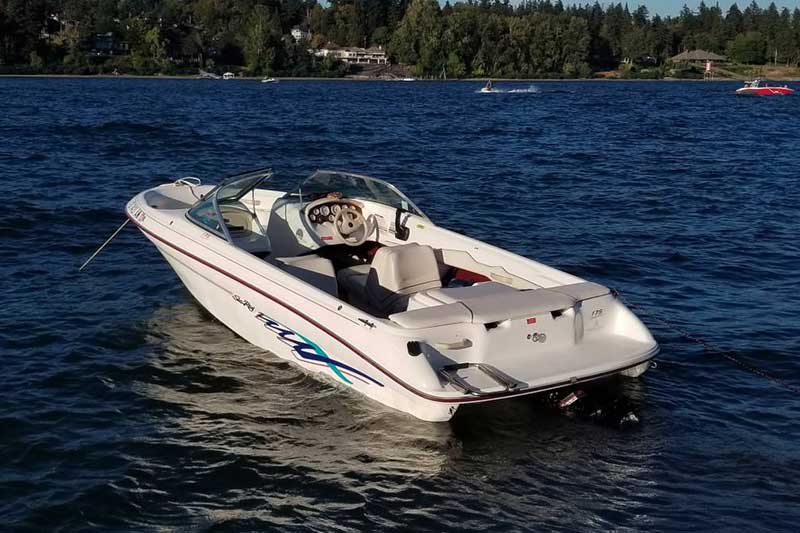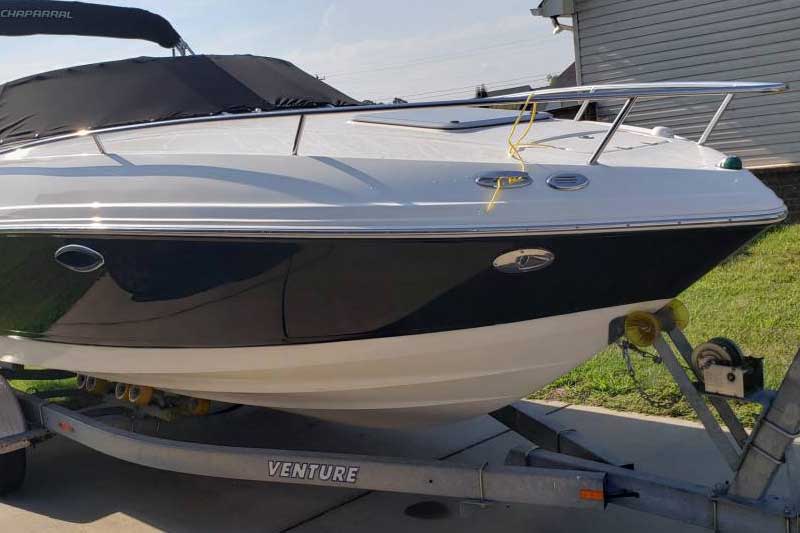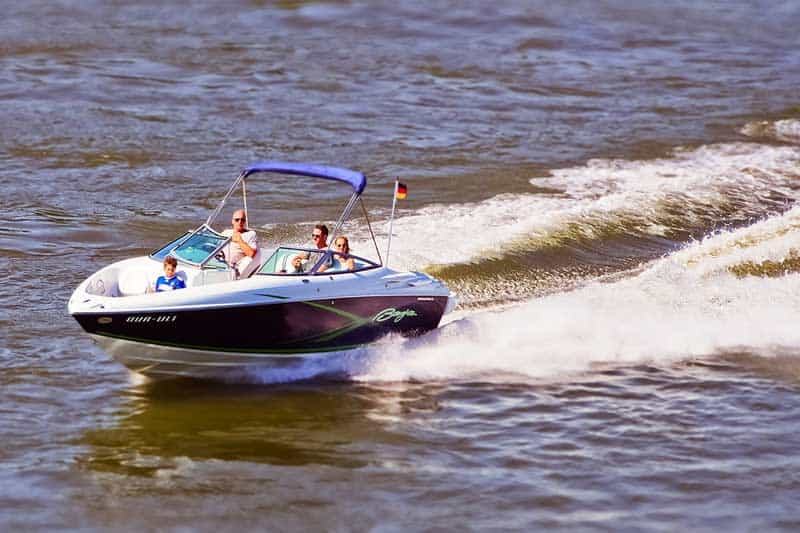Everyone deciding to purchase a recreational boat comes across a similar question: what type of boat is best to buy? Two popular options are bowriders and cuddy cabins. While they both sound cool, there are distinctive differences depending on how you intend to use them and what you prefer onboard. This article details a comparison of cuddy cabin vs. bowrider, including major features and how you can use them.
What can you do with a cuddy cabin vs bowrider?
Both type of boats are great for beginners. Cuddy cabins have strong enough motors to pull passengers for water-sport activities, such as tubing, wakeboarding, and skiing. There is also enough storage and deck space for fishing and fishing gear. Typically, you’ll find a freshwater sink onboard to make cleaning up easier. Overall, they are considered family-friendly boats and suitable for short overnight trips.
Bowriders are versatile boats that let you do various daytime activities with them. You can use them for day cruising, entertaining, fishing, and water sports where they pull a water skier or tuber. Bowriders are also easy to drive, so they can be a great choice for first-time boat owners that recently earned their boating license.

Boat purchases are a big decision, so make sure you weigh out the pros and cons against what is most important for you on the water.
Cuddy cabin vs bowrider
To help you decide between getting a cuddy cabin or bowrider boat, here is information about the main features and how they compare. Let’s find out!
1. Boat shape and size
Cuddy cabins are a cross between cabin cruisers and bowriders. However, they are typically smaller than cabin cruisers ranging in size from 18 to 30 feet. They also have a V-shaped berth that contours along the inside edges of the bow and offers a sheltered space for extra storage. Most cuddy cabins can carry an average of 6 to 8 people easily.
Bowriders have a wide back end and pointed bow, with V-shaped seats in the front and more seating in the back. The size of your bowrider will vary depending on your intended use. You can have more standing space for fishing, spacious decks for entertaining, or smaller boats for watersports. Bowriders range from 16 to 30 feet. Smaller models typically hold around 5 people, however, larger sizes can hold up to 10 people.
2. Sleeping area
One of the best aspects of a cuddy cabin is the sheltered interior area to take a nap without getting off your boat. This makes them great for overnight trips or even to rest during heavy rains when you’re out on the water. However, don’t expect to be able to stand in the lower cabins or sleep more than 2 people down there. You can, however, store camping gear for land overnights.
Bowriders aren’t the best boat for camping out on board, especially since there isn’t enough room for all passengers to sleep comfortably if the boat is at max passenger capacity. You would need to sleep on the back end of the boat only and most don’t have coverings, so you’ll be out in the open air and vulnerable to unexpected rains. Most bowriders also don’t have enough storage space for camping supplies.
3. Toilet onboard
Most cuddy cabins have a toilet on board, which is convenient considering it can be hard to find bathroom spots when boating. They usually have a portable toilet where you have to manually remove and dump the waste tank at the end of the trip. However, some newer models give you the option to add a dockside pump for easier waste removal at docks or marinas.
Most bowriders don’t have toilets. If you bring a portable toilet, there is also typically no privacy on deck for taking care of your business. However, some newer luxury models do have an enclosed toilet area, but this isn’t common.
4. Air conditioning

Both cuddy cabins and bowriders don’t have air conditioning (AC) units. Bowriders don’t have a sheltered space that would make sense to even use an AC. Some people attempt to add AC units to cuddy cabins, however, the results aren’t as optimal since using window units can lead to water dripping. If you want a proper AC unit on your boat, you’ll have to consider a cabin cruiser.
6. Speed
Cuddy cabins aren’t typically built for speed. The average speed is around 17 to 20 mph. However, you can purchase high-end models that go up to 28 mph.
In comparison, smaller and less spacious bowriders were designed to go fast. Some models will reach up to 60 mph. You can also add multiple engines to your bowrider for increased speeds.
7. Navigation capabilities
Cuddy cabins will easily navigate turns and typically can handle rough and choppy waters in the marina quite well. Most models also have docking lights on in the forward hull, making them safe to go boating with at night.
Similarly, bowriders are easy to navigate sharp turns and keep centered. However, don’t take turns at top speeds! While they aren’t meant for rough waters, they are considered adequate for navigating waves created by other boats and choppy waters. However, bowriders are meant for cruising during the day, so they typically don’t have proper lighting to see waters safely at night.
8. Affordability
Cuddy cabins typically start at $50,000 and range higher in price depending on the size of the boat and what add-on features you include. At the higher end of the price range, you can purchase cuddy cabins for several 100 thousand dollars. These more expensive models typically have multiple outboard motors that are large and deep enough to be taken into coastal areas for the night.
Since bowriders range significantly in style, they also range in price. This means there is likely to be a model that fits your budget. You can find new value bowriders for as low as $15,000 and purchase add-ons and accessories over time. Average costs of bowriders range up to $55,000. However, some customized, luxury bowriders are as high as $120,000 and more.
Conclusion
While both boats are great for water-sports, cuddy cabins offer more storage space for equipment, so the deck doesn’t feel over-crowded. They also have more privacy for changing and portapotty usage as well as a sheltered area to sleep. However, if you are looking for affordability and speed and don’t intend to use your boat for napping or overnight trips, a bowrider could be a better option for your budget. The final decision comes down to how you intend to use your boat.
